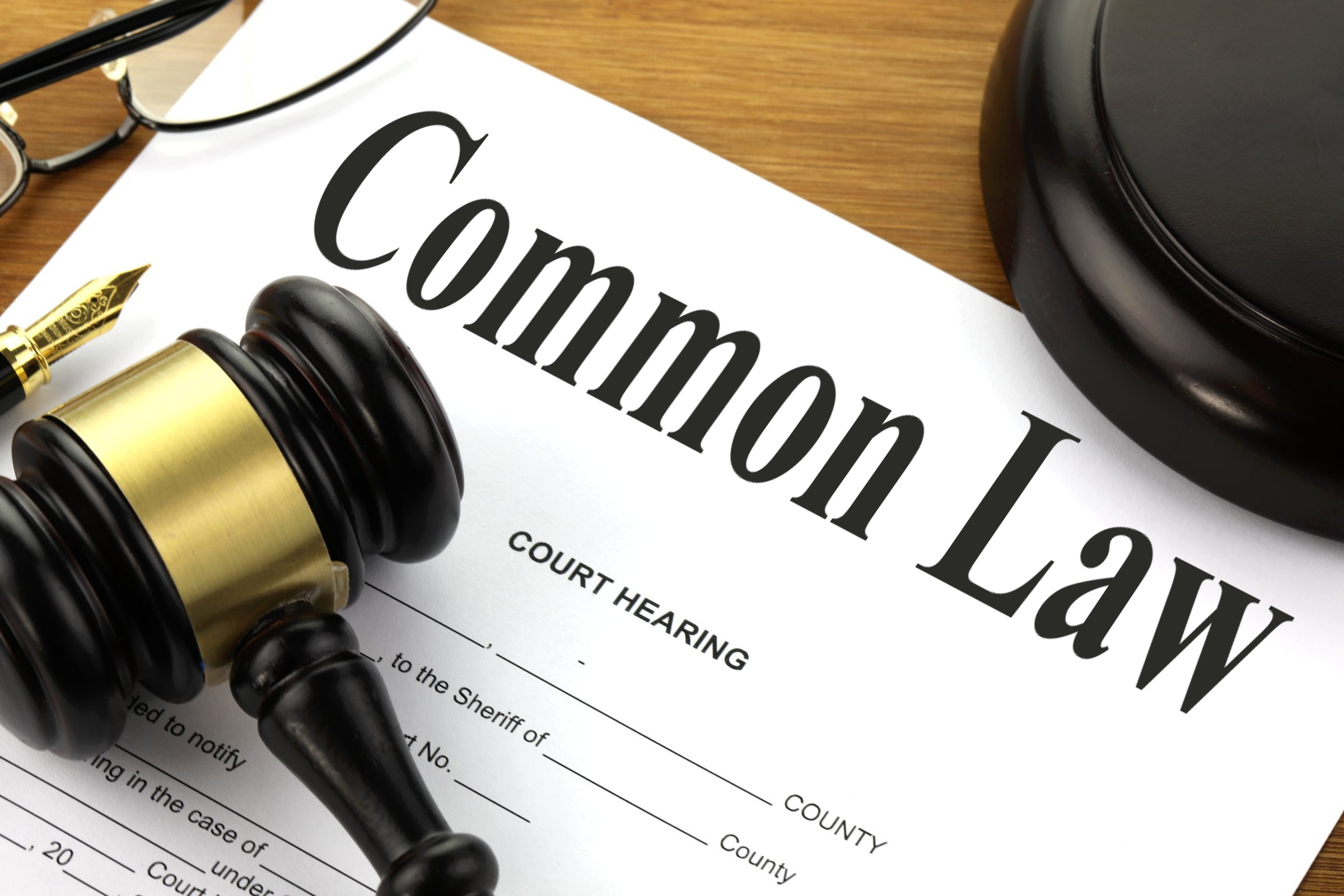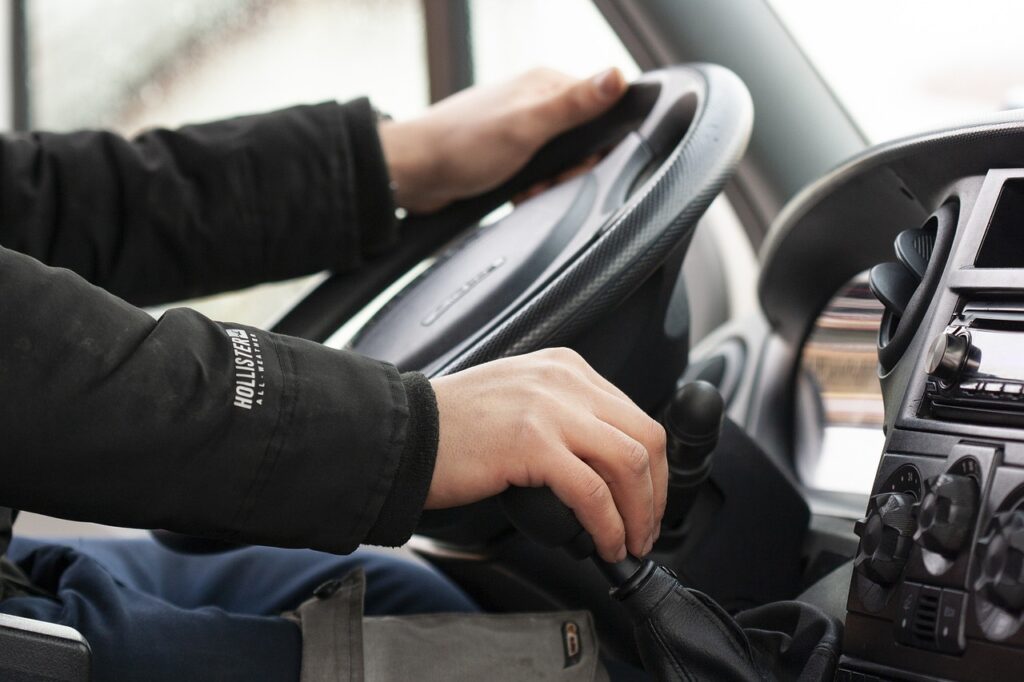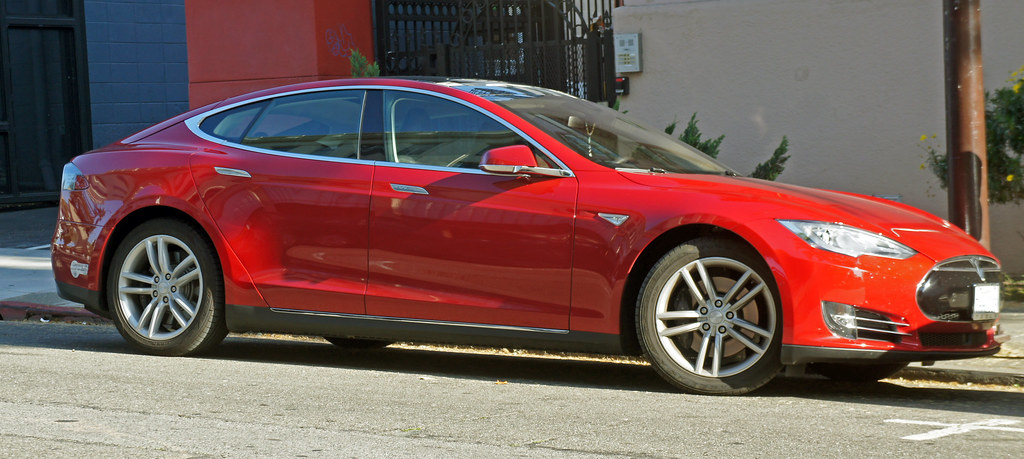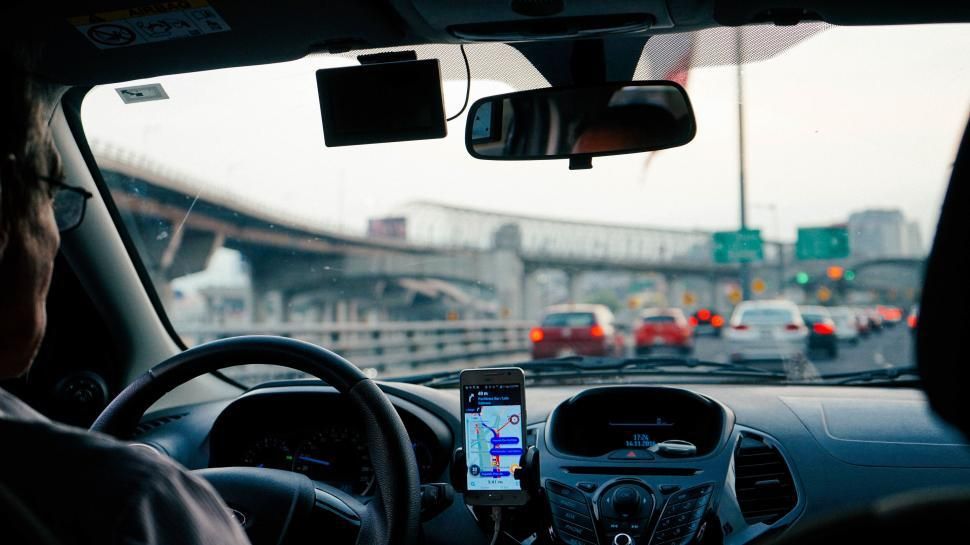
In an increasingly complex world, where information—and misinformation—travels at the speed of light, understanding fundamental legal requirements, especially those impacting daily life, has never been more crucial. Driving, a ubiquitous activity for millions, is governed by a labyrinth of regulations designed to ensure safety and order on our roads. Yet, a new generation of drivers, alongside seasoned motorists, often grapple with confusion, viral claims, and genuine misunderstandings about what it truly means to be legally licensed to operate a vehicle.
This article aims to cut through the noise, providing a clear, explanatory, and evidence-based look at the intricate landscape of driving without a license. We’ll explore the core legal definitions, delve into the nuances of who needs a license, clarify the elements prosecutors must prove, and dissect the varied penalties associated with this serious offense. Our journey will focus heavily on California’s robust Vehicle Code, but also touch upon broader trends and the pervasive issue of misinformation that shapes public perception.
Understanding these laws is not just about avoiding fines or jail time; it’s about contributing to safer communities and ensuring every driver on the road is properly vetted and authorized. With recent legislative changes and persistent viral claims muddying the waters, it’s more important than ever to arm ourselves with accurate information, providing context and clarity to a topic that profoundly affects us all.

1. **Understanding Vehicle Code 12500 VC: The Core Offense**
At the heart of California’s regulations regarding driver authorization lies Vehicle Code § 12500 (a) VC, a foundational statute that unequivocally makes it illegal to drive a motor vehicle in the state without a valid driver’s license. This isn’t just a minor administrative oversight; depending on the circumstances, it can be charged as either a misdemeanor or a non-criminal infraction. The gravity of the offense can significantly escalate, with potential penalties ranging from monetary fines to considerable jail time.
Specifically, if charged as a misdemeanor, the offense carries the possibility of up to six months in county jail and/or a fine of up to $1,000. For cases prosecuted as a non-criminal infraction, which is often seen for first-time offenders, the fine can reach up to $250. This dual classification underscores the seriousness with which California addresses unlicensed driving, reflecting its commitment to road safety and ensuring that all operators meet basic competency and legal requirements.
The language of the code section itself is precise, stating: “VC 12500 (a) A person may not drive a motor vehicle upon a highway, unless the person then holds a valid driver’s license issued under this code, except those persons who are expressly exempted under this code.” This clearly delineates the expectation for all drivers operating on public thoroughfares, including streets and roads, to possess proper authorization. The typical scenarios leading to a VC 12500 charge often involve individuals who have failed to renew an expired license, have never obtained a license in the first place, or have recently become California residents but neglected to secure a new state license within the mandated timeframe.
In many instances, the initial encounter with law enforcement that leads to a VC 12500 charge begins with a traffic stop for a separate violation, such as speeding or an improper lane change. It is during these routine stops, when a driver is unable to produce a valid license, that the charge of driving without a license is added. This highlights the importance of not only possessing a valid license but also carrying it at all times while operating a vehicle.
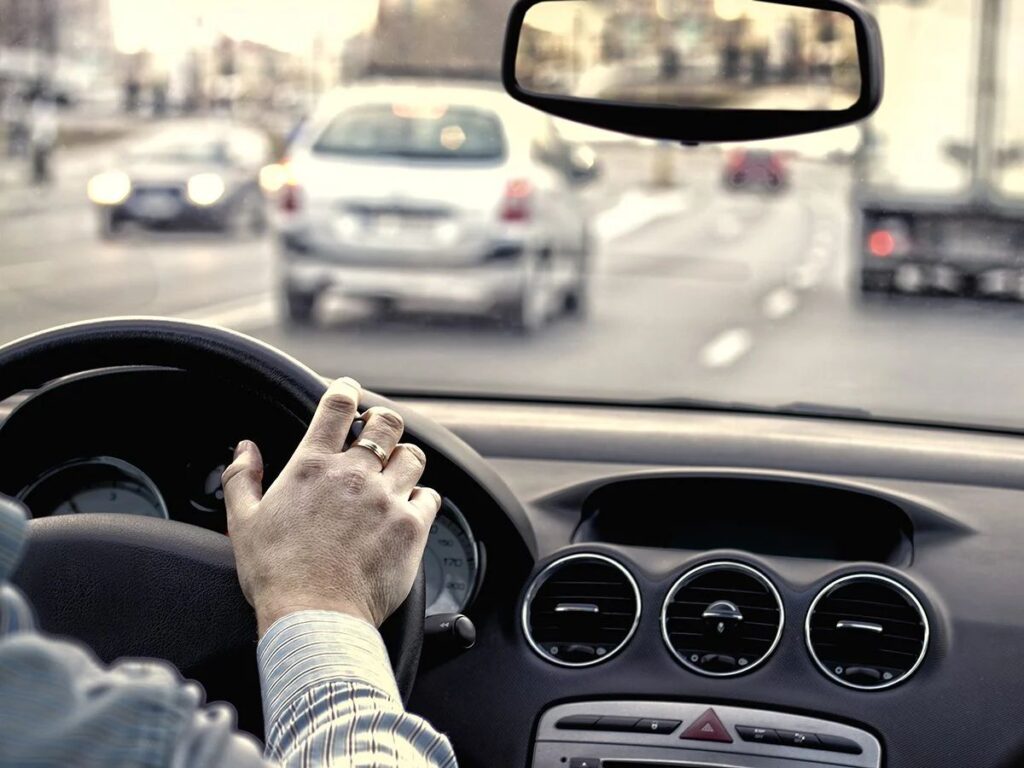
2. **California Driver’s License Requirements and Exemptions**
While the general rule in California is that anyone driving on public highways, streets, roads, or even in parking facilities open to the public must possess a valid California driver’s license, the law does recognize specific exemptions. This requirement extends beyond just automobiles to include motorcycles, motorized bicycles, and motorized scooters, ensuring a broad application of the licensing mandate across various vehicle types. Understanding these nuances is key to navigating the state’s driving regulations lawfully.
The categories of individuals who are legally exempt from needing a California driver’s license are quite specific and limited. For example, a government officer or employee operating a vehicle (provided it’s not a commercial vehicle) owned or controlled by the U.S. government, while on federal business, does not require a state license. This particular exemption acknowledges the unique operational context of federal employees carrying out their duties.
Agricultural workers also have specific allowances; individuals driving an implement of husbandry, such as a tractor, are exempt as long as their operation is not conducted on a public road. Similarly, those operating off-highway vehicles are permitted to cross a public road without a California license. These targeted exemptions are designed to accommodate particular circumstances where the nature of the vehicle or the driving environment falls outside the conventional scope of public road use.
Further exemptions apply to non-residents under certain conditions. A visitor who is 18 years of age or older and holds a valid driver’s license from their home state or country is generally permitted to drive in California. Additionally, a nonresident aged 21 or older who is transporting hazardous materials can do so with a valid DL from another state or Canada. Lastly, nonresidents possessing a valid diplomatic driver’s license, specifically for the type of vehicle they are operating, are also exempt. These provisions collectively carve out precise scenarios where a California license is not a prerequisite for driving within the state.
Read more about: From Roaring V8s to Silent Power: My Week-Long Deep Dive into the Striking Differences Between Gas Cars and EVs
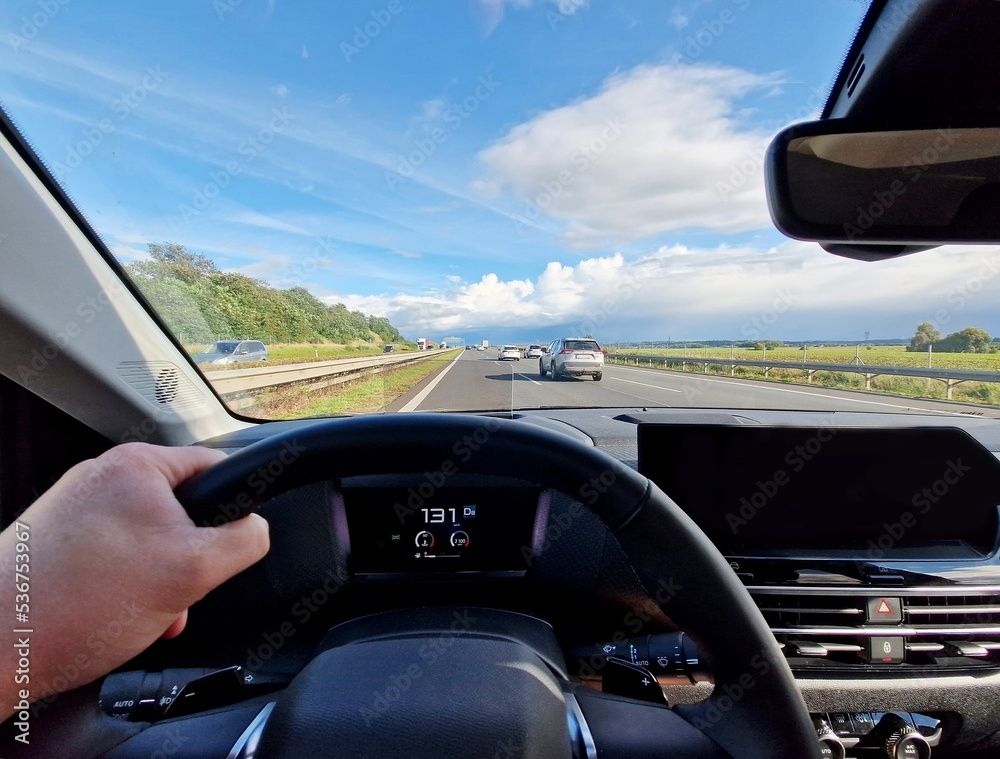
3. **Driving in California with Out-of-State or Foreign Licenses**
For many who visit or temporarily reside in California, a common question arises: can I legally drive with a license issued by another U.S. state or a foreign country? The answer is generally yes, but with important conditions that must be met to ensure compliance with state law. Out-of-state or international drivers can operate a vehicle in California provided they meet certain criteria, primarily concerning their age, the validity of their existing license, and its applicability to the vehicle type they are driving.
Specifically, individuals from out of state or another country can legally drive in California if they are at least 18 years old, possess a current and valid driver’s license from their state or country of residence, and that license is valid for the specific type of vehicle they intend to operate, whether it be a car, truck, or motorcycle. These stipulations ensure that even non-California licensed drivers meet a basic standard of authorization and qualification, reflecting the state’s commitment to maintaining road safety across all drivers.
There’s a unique provision for those whose country of residence does not require driver’s licenses. In such cases, an individual may still drive in California if they are at least 18 years old and are operating a foreign vehicle they own, but this privilege is limited to a maximum of 30 days. After this 30-day period, if they wish to continue driving in California, they are legally required to obtain a valid California driver’s license. This ensures that long-term operation within the state adheres to local licensing standards.
Minors from other states or countries, specifically those aged 16 or 17, are also allowed to drive in California, but their driving privileges are more restricted. They can drive for a maximum of 10 days immediately following their entry into the state. However, this 10-day limitation can be waived if the minor possesses a valid driver’s license from another state or country *and* has obtained a nonresident minor’s certificate from the California DMV, along with filing proof of financial responsibility. Having these specific documents in their immediate possession allows these younger out-of-state drivers to extend their driving period beyond the initial 10 days, provided they maintain all requirements.
Read more about: The ‘Free’ Test Drive Illusion: Unmasking 14 Hidden Costs Dealers Don’t Want You to Know When Buying a Car
4. **Becoming a California Resident: The 10-Day Rule**
Moving to a new state often involves a myriad of administrative tasks, and for California, securing a state driver’s license is a critical one that carries a strict deadline. Once an individual establishes residency in California, they are legally mandated to obtain a California driver’s license within 10 days. This regulation is vital for integrating new residents into the state’s transportation system and ensuring they comply with local driving standards and requirements. Ignoring this deadline can lead to charges of driving without a valid California license under VC 12500.
The determination of what constitutes “becoming a California resident” is not left to ambiguity; the state outlines clear criteria. Engaging in activities such as voting in a California election, paying resident tuition at a state educational institution, filing for a homeowner’s property tax exemption, or receiving any other privilege or benefit typically not extended to nonresidents are all indicators that an individual has established residency. These actions signify an intent to reside permanently or long-term in the state, triggering the 10-day requirement for a California driver’s license.
An important exception to the general 10-day rule applies to individuals who drive as part of their employment. For those engaged in jobs like ride-share drivers (such as Uber or Lyft) or delivery drivers, the requirement to obtain a state driver’s license is immediate. They must secure a California license *before* they can begin driving for work within the state. This stricter enforcement for professional drivers reflects the increased public exposure and responsibility associated with their roles. It is crucial to note, however, that this employment-related requirement does not extend to simply driving to and from a place of employment, which falls under the general residency rule.
Therefore, individuals relocating to California must promptly address their licensing needs by understanding these residency definitions and deadlines. Failing to do so not only places them in violation of Vehicle Code 12500 but also potentially exposes them to the penalties associated with driving without a valid license, emphasizing the state’s serious approach to driver authorization for its residents.

5. **Elements of the Crime and Unusual Burden of Proof**
For an individual to be convicted of driving without a license under Vehicle Code 12500 in California, prosecutors must successfully demonstrate specific elements of the crime, as defined by jury instructions. These elements form the bedrock of the prosecution’s case, outlining precisely what actions and circumstances constitute a violation. However, what makes VC 12500 cases particularly noteworthy is a unique twist in the burden of proof, deviating from the typical legal standards applied in most state offenses.
To secure a conviction, the prosecution must primarily prove two key elements: first, that you drove on a street or highway. This establishes the act of driving within a public domain where licensing requirements are enforced. Second, and crucially, they must demonstrate that at the time you drove, you either did not hold a validly issued driver’s license *or* you were legally required to obtain a state driver’s license. This second element encompasses scenarios such as operating with an expired license, never having obtained one, or failing to acquire a California license after establishing residency.
The definition of a “valid” driver’s license in this context is also clearly delineated. A license is considered valid if it is a current, legitimate driver’s license issued by any state or country, is appropriate for the type of vehicle being driven (e.g., car, motorcycle, commercial truck), and the driver is not otherwise mandated to obtain a California state driver’s license, such as after becoming a resident. These criteria ensure a comprehensive understanding of what constitutes proper authorization.
Perhaps the most unusual aspect of Vehicle Code 12500 cases in California is the burden of proof. Unlike most state offenses where the prosecution bears the burden of proving each element of the crime “beyond a reasonable doubt,” in a VC 12500 case, this dynamic shifts. The prosecution simply needs to allege that you were not licensed at the time of driving. The onus then transfers to the defendant to prove that they *did* possess a valid driver’s license. This unique legal construct is founded on the logical premise that it is significantly easier for an individual to prove the existence of their own license than for the prosecutor to conclusively prove its non-existence. This procedural distinction is vital for anyone facing such a charge to understand.
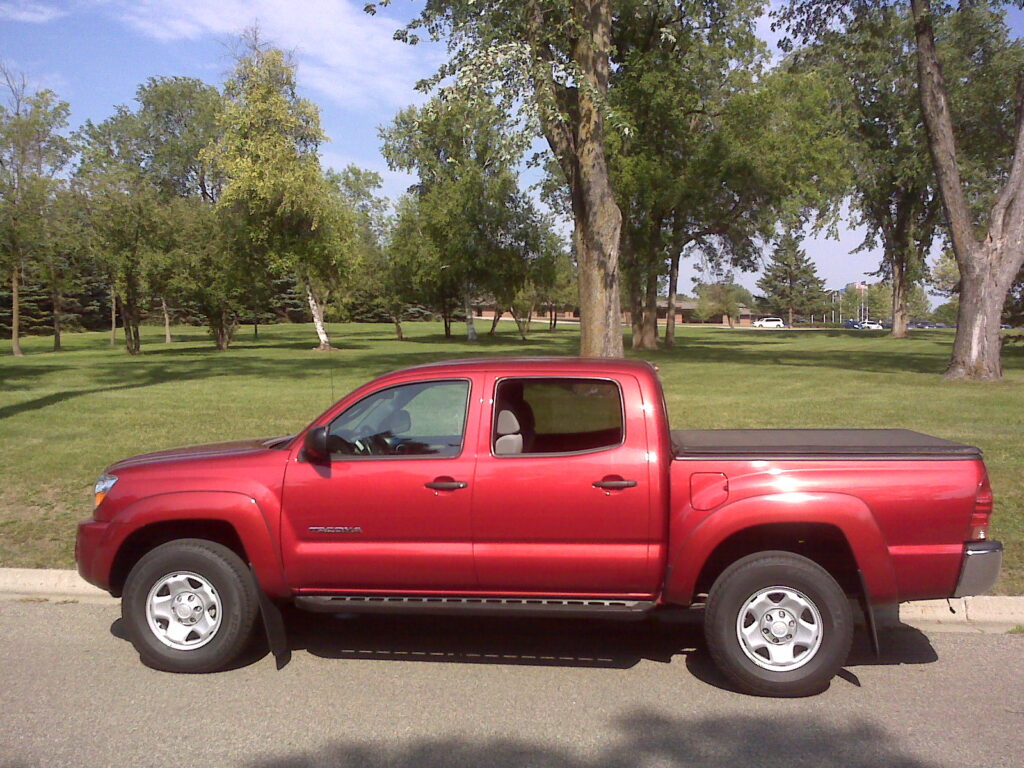
6. **Distinguishing VC 12500 from Related Offenses**
While the charge of driving without a license under Vehicle Code 12500 is straightforward in its definition, it’s crucial to understand how it differs from other related traffic violations that often cause confusion. Law enforcement encounters can quickly escalate if drivers are unaware of the distinct legal categories, each carrying its own set of implications and penalties. Properly identifying these distinctions is essential for both drivers and those seeking to understand California’s complex vehicle code.
Most Vehicle Code 12500 charges arise from situations where an individual has never obtained a driver’s license, failed to timely renew an expired license, or established residency in California but neglected to obtain a state license within the prescribed 10-day period. These scenarios directly align with the core prohibition against driving without proper authorization. However, not all license-related issues fall under VC 12500; some are distinct offenses with different legal consequences.
A more serious offense, distinct from VC 12500, is driving on a suspended or revoked license, which falls under Vehicle Code 14601 VC. This charge is always prosecuted as a misdemeanor, reflecting the heightened gravity of knowingly disregarding an official license suspension or revocation. It signifies a clear contempt for a prior legal order, thus incurring stricter penalties compared to simply never having obtained a license or allowing one to expire without renewal.
Furthermore, if you possess a valid driver’s license but simply forgot to bring it with you at the time of a traffic stop, police will typically cite you under Vehicle Code 12951 VC – California’s law on failing to display a driver’s license. This is generally treated as an infraction, carrying fines up to $250. Importantly, this charge is often dismissed if you can later present the court with a license that was valid at the time of the arrest, demonstrating that the issue was one of omission rather than a complete lack of authorization. A final distinction lies in refusing to show your license, which, if you were driving, is a misdemeanor under VC 12951, punishable by a fine and/or jail time, contrasting with some states where general identification is not legally mandated during a stop.
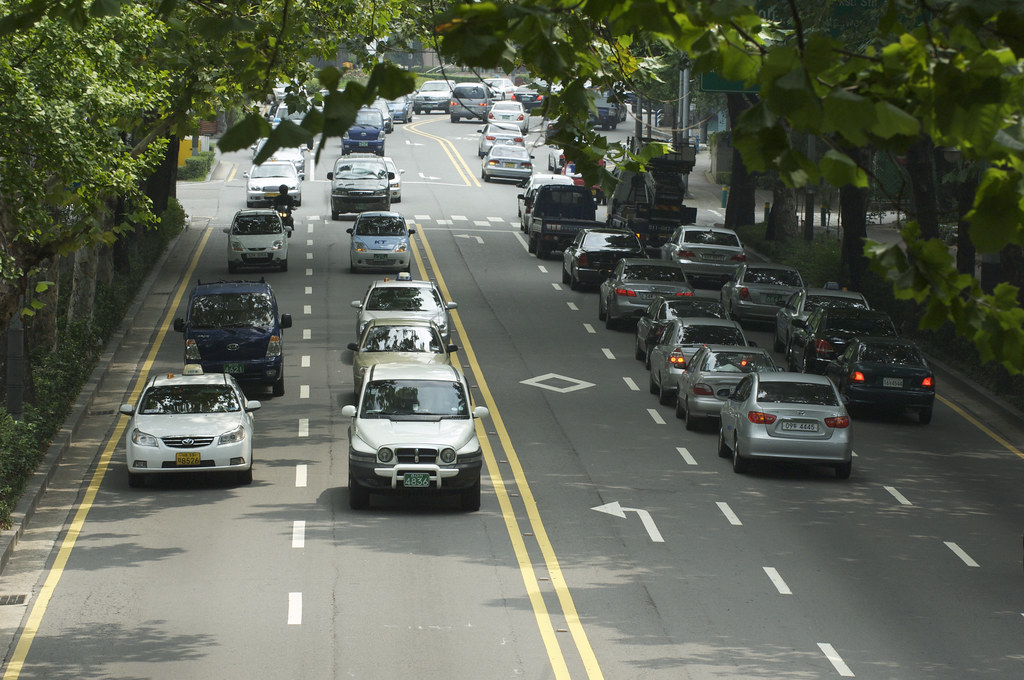
7. **Penalties for Driving Without a License: Infractions vs. Misdemeanors**
Driving without a valid license in California, while a serious offense, doesn’t always result in the same punishment. Vehicle Code 12500(a) is classified as a “wobblette” offense, meaning it can be prosecuted with varying degrees of severity, largely depending on the specific circumstances of the violation and the driver’s history. This flexible approach allows the legal system to differentiate between isolated oversights and habitual non-compliance, ensuring penalties are proportional to the offense.
For first-time offenders, or in less egregious situations, the charge is often prosecuted as a non-criminal infraction. This typically results in a fine of up to $250, serving as a deterrent without imposing more severe criminal consequences. This approach recognizes that some instances of driving without a license might stem from genuine misunderstanding, forgetfulness, or minor administrative lapses rather than a deliberate disregard for the law. However, even an infraction carries financial implications and a mark on one’s driving record.
Conversely, for repeat offenders or in cases where aggravating factors are present, driving without a license can be elevated to a misdemeanor. The penalties for a misdemeanor conviction are substantially more severe, reflecting a greater level of legal culpability. These can include informal misdemeanor (or “summary”) probation for up to three years, a jail sentence of up to six months, and/or fines reaching up to $1,000. These more stringent penalties are designed to deter recurrent violations and underscore the state’s firm stance against persistent unlicensed driving.
Furthermore, if a driver has a prior conviction for Vehicle Code 12500 or certain other driving offenses, the legal consequences can intensify, potentially including a 30-day impoundment of their vehicle. This measure serves as a significant punitive and preventative action, removing the means by which repeat offenders might continue to drive without proper authorization. It’s also worth noting that specific prosecutorial policies, such as those in the L.A. County D.A.’s office, often dictate that VC 12500 cases are generally not prosecuted unless there are prior offenses within the preceding 24 months, indicating a focus on habitual violations.
Navigating the complexities of California’s Vehicle Code can often feel like a formidable challenge, especially when facing charges related to driving without a license. While the statutes are clear on what constitutes an offense, understanding the available avenues for defense is equally vital. It’s a testament to the legal system’s intricacies that even in seemingly straightforward cases, multiple strategies can be employed to challenge or mitigate a charge under Vehicle Code 12500.

8. **Strategies for Defending Against Unlicensed Driving Charges**
Facing a charge of driving without a license can be daunting, but it’s important to recognize that legal defenses exist. One of the most common scenarios arises when a driver possesses a valid license but police either fail to acknowledge it or overlook its presence during a traffic stop. In such instances, providing clear evidence of a valid license at the time of the stop is a primary defense, often leading to dismissal or reduction of the charge.
Another powerful defense, known as the “no driving defense,” asserts that the individual was simply not operating the vehicle when the alleged violation occurred. This could be applicable if one was merely sitting in a parked car, for example, or if there’s confusion about who was actually behind the wheel. Establishing that the defendant was not in control of the vehicle at the time of the incident can completely undermine the prosecution’s case.
Furthermore, a defendant might argue they were legally exempt from needing a driver’s license, a defense that, while rare, is provided for within the Vehicle Code itself. This would involve proving one falls into one of the specific exemption categories, such as a federal employee on official business or operating an implement of husbandry under specific conditions. Such arguments rely heavily on precise interpretations of the exemption clauses.
Perhaps the most common defense, distinct from a complete lack of a license, applies when a driver possessed a valid license but simply forgot to carry it. This situation falls under Vehicle Code 12951 VC, which is typically an infraction. Often, if a driver can later present the court with a license that was valid at the time of the arrest, the charge under VC 12951 will be dismissed, distinguishing it from the more serious VC 12500 charge. Legal counsel can also strategically seek to postpone a case, allowing the defendant time to obtain a valid driver’s license, or, in misdemeanor cases, work to persuade the District Attorney to reduce the charge to a less severe infraction.

9. **Provisions for Undocumented Immigrants: The AB 60 License**
California, recognizing the practical realities and economic contributions of all its residents, has taken a proactive step to ensure road safety and integrate undocumented immigrants into the state’s licensing system. Through the “AB 60 license” provision, individuals without a social security number can still qualify for a driver’s license, marking a significant policy shift that prioritizes public safety and broader community inclusion. This measure acknowledges that an authorized driver, regardless of immigration status, is a safer driver.
These AB 60 licenses are functionally similar to regular driver’s licenses, granting the holder the legal authorization to operate a motor vehicle on California roads. The only distinguishing feature is a mark on the upper right-hand corner that reads “Federal Limits Apply.” This designation clarifies that while the license is valid for state driving privileges, it cannot be used for federal identification purposes, such as boarding domestic flights or entering federal facilities.
The implementation of the AB 60 license not only provides a legal pathway for a significant portion of the population to drive but also contributes to greater road safety by ensuring more drivers are tested, licensed, and insured. It reduces the number of uninsured and untested drivers on the road, creating a more secure environment for everyone. This policy reflects a broader understanding that public safety benefits when all drivers are held to the same standards, rather than pushing certain populations into the shadows of unlicensed driving.
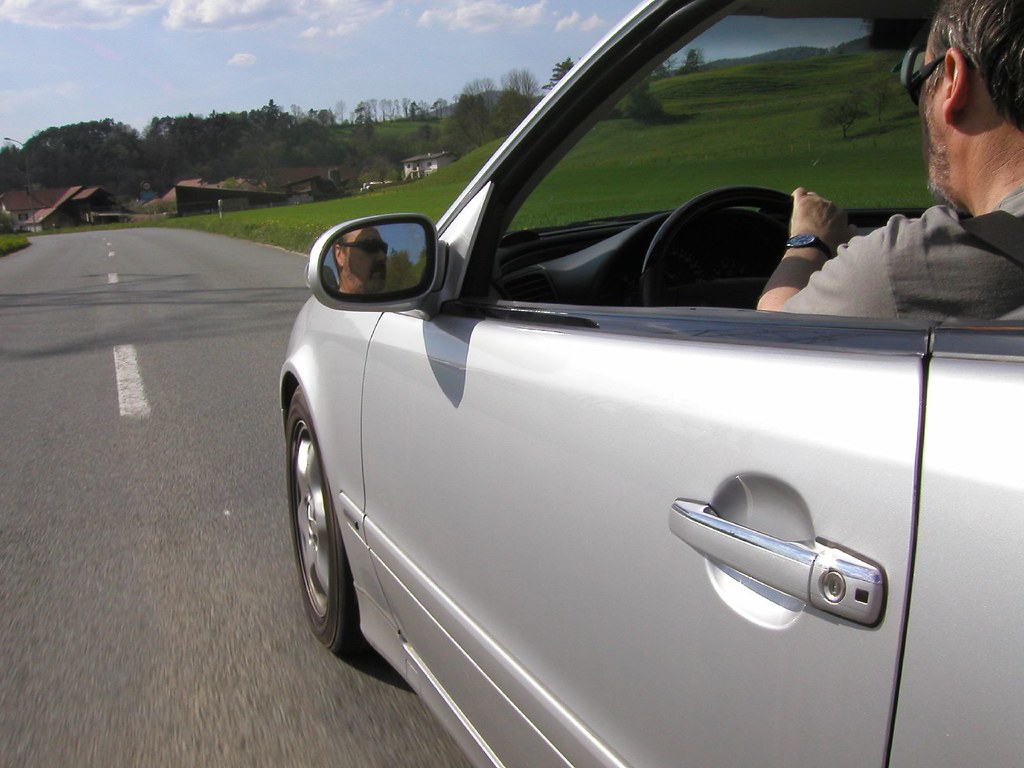
10. **Deconstructing Viral Misinformation: The “No License Needed” Myth**
In the age of viral content, false claims can spread like wildfire, often leading to widespread confusion and even legal jeopardy for those who believe them. A prominent example of this surfaced recently on TikTok, where several videos made the baseless assertion that driver’s license requirements would be abolished starting in January 2026, supposedly under a directive from former President Donald Trump. Such claims, viewed and shared thousands of times, painted a picture of a radically changed driving landscape, prompting both excitement and disbelief among social media users.
The core of the misinformation suggested that by a specific date, individuals could simply “get in the car and go” without the need for any form of driver authorization. These videos, often lacking any factual evidence, capitalized on public curiosity and a desire for simplified regulations. Newsweek, among other fact-checking entities, swiftly debunked these claims, highlighting the critical distinction between federal and state jurisdiction over driver licensing.
The truth is, the licensing of drivers is primarily governed by state laws, not the federal government. Even if a president were to advocate for such a change, it would necessitate substantial legislative action at the state level or a fundamental alteration of existing transportation regulations, none of which have been proposed or documented. The Department of Transportation Federal Highway Administration regulations clearly stipulate that each state is responsible for enforcing its own licensing laws, meaning any sweeping federal mandate to eliminate licenses is entirely without precedent or legal basis.
In fact, President Trump’s actual policy actions in April 2025, per a White House fact sheet, moved in the opposite direction for certain drivers. Rather than easing licensing requirements, an executive order increased enforcement for commercial drivers, mandating they be “properly qualified and proficient in English.” It also instructed the Secretary of Transportation to review state issuance of non-domiciled commercial driver’s licenses for irregularities. The ruling on the viral claim was unequivocally “False,” underscoring the importance of critical information literacy in a digitally saturated world.

11. **Unpacking Recent Legislative Claims: California, Florida, and New York**
Beyond the viral misinformation, a wave of widely circulated, yet often misattributed or misunderstood, claims has swept across the nation regarding new laws impacting unlicensed driving in California, Florida, and New York. Headlines suggested dramatic shifts in penalties and enforcement, fueling public debate about road safety and the efficacy of current regulations. However, a closer look at the actual legislative texts reveals a different story, one where the purported changes often bear little resemblance to reality.
In California, for instance, reports claimed that Senate Bill 710 (2025 session) had elevated the offense of driving without a license to a misdemeanor for repeat offenders. The actual SB 710, however, deals exclusively with taxation, specifically concerning property tax exemptions for certain solar energy systems, containing no mention of driving offenses whatsoever. While California’s existing laws already include stricter measures for repeat offenders, no new 2025 bill has altered that established framework, highlighting how quickly a bill number can be mistakenly linked to an unrelated public concern.
Similarly, Florida’s House Bill 203 was widely reported to have introduced a zero-tolerance policy, mandating immediate vehicle impoundment for unlicensed drivers. This claim was also inaccurate. The real HB 203 focused on transportation concurrency requirements—local government planning for infrastructure development—and ultimately died in the Senate in June 2025, never becoming law. While Florida does impose fines and potential jail time for unlicensed driving, no automatic vehicle impoundment law was enacted through this bill, demonstrating how legislative proposals can be misconstrued before they even reach full enactment.
New York also saw its share of misleading reports, with claims of real-time digital license scanning at highway checkpoints designed to catch unlicensed drivers. While New York has indeed rolled out an innovative Mobile ID program, allowing residents to store digital driver’s licenses on smartphones, this initiative is entirely voluntary. It is designed for convenience and identity verification, not for widespread, mandatory roadside scanning checkpoints. The discrepancies between these sensationalized claims and the actual legislative efforts underscore a broader confusion driven by intensified public scrutiny of road safety.

12. **California’s AB 2746: A Nuance in Penalties**
The landscape of penalties for driving without a valid license in California underwent a significant shift with the passage of AB 2746 (Stats. 2022, Ch. 800), which came into effect on January 1, 2023. This legislation introduced crucial amendments to Vehicle Code Section 12500, fundamentally altering how violations are classified and punished. Previously, driving without a valid license was universally considered a misdemeanor, carrying the weight of a criminal charge.
Under the provisions of AB 2746, the offense is now predominantly classified as an infraction for a first or second violation. This change means that for most initial occurrences, offenders face a fine of one hundred dollars ($100), rather than the potentially more severe consequences of a misdemeanor conviction. This reclassification signals a legislative intent to reduce the severity of penalties for less serious, first-time offenses, offering a more lenient approach compared to the prior framework.
However, the bill maintains a serious stance for specific circumstances. If an individual has a prior driver’s license suspension or revocation for more serious offenses, such as those related to reckless driving, DUIs, or vehicular manslaughter, a first or second violation of VC 12500 may still be charged as either a misdemeanor or an infraction. This nuanced approach ensures that repeat offenders with a history of dangerous driving are subject to stricter accountability, reflecting the state’s ongoing commitment to road safety.
For a third or subsequent violation of VC 12500, the offense retains its “wobblette” status, meaning it can be charged as either a misdemeanor or an infraction, depending on the specific facts and prosecutorial discretion, in accordance with Penal Code 19.8. Notably, AB 2746 also removed a prior provision (VC 11000.11, subdivision (b)) that outlined penalties. Furthermore, the bill’s lack of a savings clause means that the reduction in punishment for driving without a license likely applies retroactively to non-final cases that occurred before January 1, 2023, aligning with the legal principle established in In re Estrada (1965).
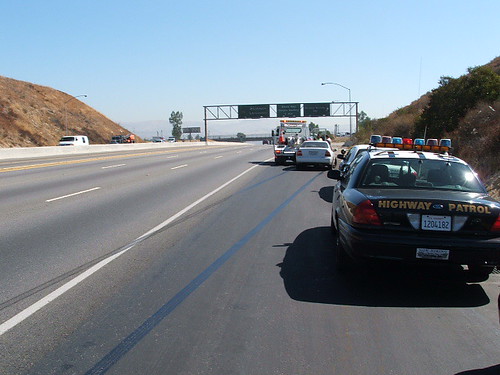
13. **Broader Trends and New Laws Impacting Road Safety and Driver Regulations in California (2025)**
Beyond specific licensing offenses, California is continuously updating its Vehicle Code to address evolving challenges in road safety and transportation. As of January 1, 2025, a slew of new laws are taking effect, aiming to make communities safer, modernize vehicle regulations, and respond to new technologies. These legislative updates reflect a comprehensive effort by the state to maintain order on its roads, from cracking down on dangerous driving behaviors to adapting to autonomous vehicles and digital identification.
A significant package of laws targets dangerous sideshows and street takeovers, notorious for their risks to public safety. AB 1978, for instance, empowers law enforcement to impound vehicles without taking the driver into custody for obstructing highways in connection with such events. Further enhancing this, AB 2186 allows for the removal of vehicles used in exhibitions of speed in off-street parking facilities for up to 30 days, while AB 3085 expands the list of offenses warranting vehicle impoundment via court order. These measures provide robust tools for authorities to deter and penalize increasingly prevalent and hazardous illegal street activities.
The advent of autonomous vehicles (AVs) also brings new regulatory needs. AB 1777, upon the DMV’s adoption of necessary regulations, creates authority for law enforcement to issue “notices of AV noncompliance” to manufacturers for alleged traffic violations committed by their vehicles. This bill also establishes requirements for how AVs operating without a human operator interact with first responders, including mandating two-way communication devices in these vehicles, effective July 1, 2026. This forward-looking legislation is crucial for integrating new technologies safely into the existing traffic ecosystem.
Moreover, California is pioneering advancements in vehicle identification and driver privacy. AB 3138, taking effect January 1, 2027, authorizes the use of alternative devices to traditional license plates or registration cards, potentially including vehicle location technology. Crucially, this law specifies requirements for disabling and enabling such technology and prohibits the recording or transmission of personally identifiable information without explicit controls. This modernization effort demonstrates the state’s commitment to leveraging technology while safeguarding individual privacy, signifying a thoughtful evolution in how California manages its roadways and the vehicles that traverse them.

14. **Special Regulations for New Drivers in California**
California maintains a comprehensive set of regulations specifically designed for new drivers, primarily teenagers, to foster responsible habits and reduce accident risks. These provisional licensing requirements are a cornerstone of the state’s Graduated Driver Licensing (GDL) program, ensuring that young motorists gain experience under carefully controlled conditions before earning full, unrestricted driving privileges. Understanding these specific mandates is not just about compliance; it is about embracing a safer approach to the road.
Under California Vehicle Code 12814.6, individuals under 18 must progress through a structured system, beginning with a learner’s permit at 15 ½ years old after completing driver’s education and passing a written test. This permit necessitates supervised driving with a licensed adult over 25. After holding the permit for at least six months, accumulating 50 hours of supervised driving (including 10 at night), and passing a behind-the-wheel test, a provisional license is issued. This intermediate license remains restricted until the driver turns 18, at which point it automatically converts to a full license, recognizing the gradual nature of skill development.
Crucially, new provisional license holders face strict passenger and curfew restrictions during their first 12 months. They are prohibited from transporting passengers under 20 years old unless accompanied by a licensed driver aged 25 or older. This measure directly addresses research showing that teenage passengers significantly increase the likelihood of risky driving and collisions among inexperienced drivers. Additionally, an overnight curfew from 11:00 PM to 5:00 AM is enforced, limiting exposure to the heightened hazards of late-night driving, such as reduced visibility and the presence of impaired drivers.
California also enforces stringent distracted driving prohibitions for young motorists. Vehicle Code 23124 explicitly bans drivers under 18 from using a mobile phone for any purpose, even hands-free, recognizing their heightened susceptibility to distraction. Beyond electronic devices, any distraction that compromises safety can lead to citations for reckless or negligent driving under Vehicle Code 23103. Complementing these, the state has a zero-tolerance policy for underage drinking and driving (VC 23136, 23140), penalizing any driver under 21 with a blood alcohol concentration (BAC) of 0.01% or higher, reflecting a strong stance against impaired driving among youth. Violations of any of these rules carry significant penalties, ranging from fines and license suspensions to mandatory alcohol education programs, emphasizing the importance of adherence for a clean driving record and, more importantly, safer roads for all.
Read more about: America’s Iconic Sports Car: Decoding the Most Problematic Corvette Models in History to Help You Buy Smart
The evolving landscape of driver regulations, both in California and across the nation, underscores a clear and consistent message: compliance with licensing laws and adherence to safe driving practices are paramount. From the meticulous defenses available to the critical distinctions in penalties, from the integration of undocumented immigrants into the licensing framework to the debunking of viral myths, and from the continuous updates in state legislation to the specific safeguards for new drivers, the system is designed to promote safety and accountability. As roads become busier and technology advances, staying informed about these laws is not just a legal obligation but a societal responsibility, ensuring that every journey is as safe as possible for everyone on the road. The conversation around driver authorization is dynamic, reflecting our collective commitment to a secure and efficient transportation future.

